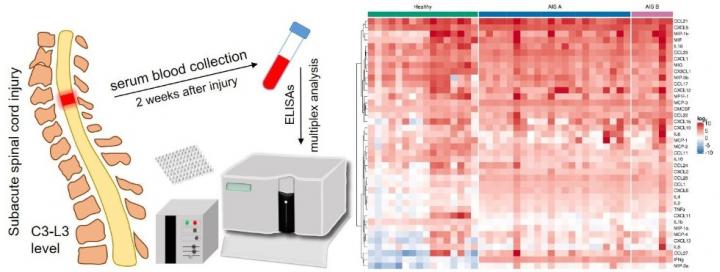A continuation of ongoing effort by Kazan Federal University and its partners saw light in Brain Sciences.

Credit: Kazan Federal University
The research is conducted by Kazan University’s Open Lab Gene and Cell Technologies (Center for Precision and Regenerative Medicine, Institute of Fundamental Medicine and Biology) and Republic Clinical Hospital of Kazan. Lead Research Associate Yana Mukhamedshina serves as project head.
Spinal cord injury mechanisms include primary and secondary injury factors. Primary injury is mechanical damage to the nervous tissue and vasculature with immediate cell death and hemorrhage. Secondary damage leads to significant destructive changes in the nervous tissue due to the development of excitotoxicity, death of neurons and glial cells, inflammatory reactions, and the formation of a glial scar, which prevents the restoration of nerve connections. It should be noted that secondary trauma during this period leads to more serious clinical consequences than the original primary trauma. In this regard, there is an urgent need to develop a panel of diagnostic biomarkers to determine the severity of injury. Therefore, over the past two decades, there has been a growing interest in the development of new, reliable and practical tools for diagnosing the degree of spinal cord injury and predicting the outcome of the disease.
This paper demonstrates the importance of measuring serum cytokine concentrations as a quick and affordable means of accurately classifying the severity of spinal cord injury in patients, eliminating the risks and complications associated with the use of repeated cerebrospinal fluid sampling. But more research is needed to integrate those findings into the universal standard of care for spinal cord injury screening and diagnosis.
The need for predictive biomarkers is multifaceted. First, health care decisions will become more personalized and tailored to each case, which will minimize ineffective interventions and facilitate patient follow-up. Second, such tools would be useful in the provision of medical care for patients with spinal cord injury in developing countries that lack modern medical resources. Third, it will significantly accelerate research into spinal cord injury at both the preclinical and clinical levels.
Results will allow the development of a test system for assessing the prognostic course of traumatic spinal cord injury, as well as recommendations and suggestions for the use of the most effective therapy option. They will also contribute to the development of new early biomarkers of neurodegenerative diseases.
###
Media Contact
Yury Nurmeev
[email protected]
Original Source
https:/
Related Journal Article
http://dx.




